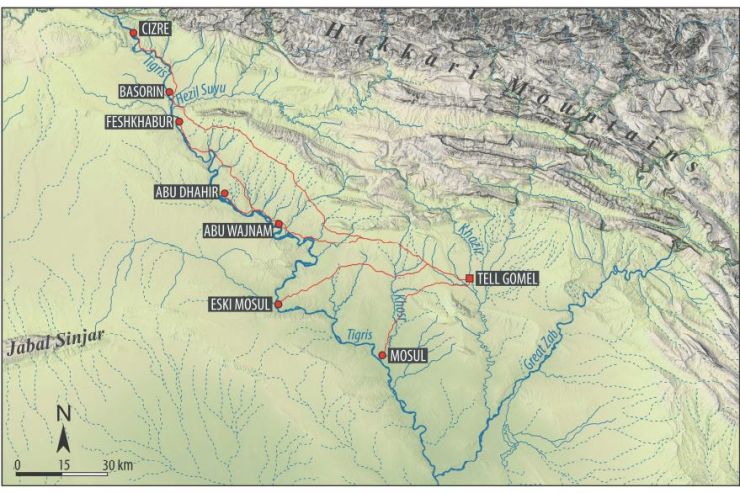1 Cze, 2021
Alexander the Great's Route to Gaugamela and Arbela
Teledetekcja w pracach badawczych historyków z Uniwersytetu Jagiellońskiego. Jak to zrobić, wie doskonale dr inż. Tomasz Pirowski, współautor artykułu opublikowanego przez wydawnictwo DE GRUYTER. Dla inspiracji zamieszczamy streszczenie publikacji.

The aim of this paper is to analyse the chronology and itinerary of the march of the Macedonian army during the last days (September 18–October 1) of the Gaugamela campaign in 331 BC in the light of literary sources, cuneiform data, topographic and archaeological data, and GIS capabilities. The overall aim of this analysis is to contribute to the topographical enigma of the identification of Gaugamela as either (in the vicinity of) Tell Gomel or Karamleis/Qaraqosh. The cuneiform data allows us to establish the most important dates of the final course of the Gaugamela campaign: the Tigris crossing on September 18, a lunar eclipse on the evening of September 20, and the battle on October 1. Furthermore, a critical analysis of Arrian and Curtius suggests that the Macedonians spent only six days on the march and four days in the camp. Given the estimated average rate of the march of the Macedonian army, it is possible to reject certain routes between the Tigris crossing and Gaugamela and consider others as more or less likely. It is concluded that the Macedonians crossed the Tigris in the vicinity of modern Basorin and not Abu Dhahir or Abu Wajnam, as is widely assumed. Furthermore, it is also demonstrated that the difference between Tell Gomel and Karamleis/Qaraqosh, regarding their distance from Arbela, is much less striking than is frequently assumed, and as such does not speak against any of the widely held identifications of Gaugamela.



